The Barons of Bay View
Wealthy businessmen Stephen Clement and Eber Ward founded Bay View, named many streets.
Stephen Clement and Eber Ward were two of the founders of the iron rolling mill that would become the core of the Bay View neighborhood. They were about the same age; Ward was born in Canada in 1811 and Clement in Pennsylvania in 1813; and their careers followed similar paths. Both resided in Detroit and became captains of Great Lakes ships in their early twenties, and they co-owned a steamer line that provided service between Milwaukee and Chicago while in their early forties.
In 1866, while in their fifties, they founded the Village of the Milwaukee Iron Company, which produced rails for the rapidly growing railroad industry. (Bay View grew as a company town around the iron mill.) The two men were very close; Clement named his son Ward after his partner. They were even relatives for a while. Ward had married Mary McQueen in 1837 and Clement married her younger sister, Susan, after his first wife died in 1853. The brother-in-law relationship ended in 1869 when Mary divorced Ward for adultery. Two months later he married his second wife, Catherine Lyon.
Ward, who was known as the “steamship king of the Great Lakes,” remained a resident of Detroit, where he became more wealthy by the minute due to his ownership in shipbuilding, railroads, mining, and steel mills. He became Detroit’s first millionaire and when he died there in 1875 he was the richest man in the Midwest.
When Clement became the president of the Bay View company in 1877 he moved to Milwaukee and resided in the Yankee Hill neighborhood. According to his obituary, he was one of the wealthiest men in Milwaukee when he died at his daughter’s summer home in Oconomowoc in August 1894. He was buried in Waukegan, Illinois.
Eber Ward’s name is memorialized in Bay View with E. Ward Street, a short side-street, .3 miles long, that connected E. Lincoln and S. Kinnickinnic avenues early in its history, and was later extended from KK Avenue to E. Bay Street. The much better known S. Clement Avenue was named for Stephen Clement and runs from E. Otjen Street in Bay View to S. Whitnall Avenue near the north end of General Mitchell International Airport, a distance of 2.3 miles.
During the Christmas holidays in 1898, cock fighting produced some excitement on Clement Avenue. Ed Hunt‘s saloon at Clement and Howard Avenues was the site of the illegal activity which was popular in the Milwaukee area. Two roosters were put into a pit and they fought to the death while bettors rooted for their favorite.
Fights between the birds usually took place far from the city to prevent detection by the authorities and were often scheduled to pit trained roosters from Milwaukee against birds from other cities. On the night of December 28th, a series of fights between male chickens from Chicago and Milwaukee was arranged for the second floor above Hunt’s tavern which, it turned out, was too close to the city. Carpeting was placed over the windows to muffle the sound of the screaming and yelling that would occur during the fights. Steel spurs were placed over the birds’ natural spurs to assure the death of one of the combatants. Between 75 and 150 bettors crammed around the second floor pit and the fights began.
Twenty-two men spent the night at the South Side Police Station, and warrants were issued for 15 more who were identified but not arrested because the limited number of police officers could not handle so many lawbreakers. Among the scofflaws were candy bar maker George Ziegler, Milwaukee County Register of Deeds Henry Verges, and former alderman Robert Rudolph. The penalty for attending cock fights was one hundred dollars. At that time, the average wage earner made less than $500 annually, so the fine was a severe financial hardship for many of the spectators and must have cooled their ardor for watching birds fighting.
With Ward and Clement’s background on the Great Lakes, it is not surprising that they named eight streets in their new community of Bay View for the five Great Lakes and the three rivers that connect them with the Atlantic ocean. Of the river street names, only St. Clair remains; the Niagara and St. Lawrence street names were changed over the years. Of the Great Lake names, only Ontario and Superior Streets still exist in Bay View.
Along Clement
Along Ward
Carl Baehr, a Milwaukee native, is the author of Milwaukee Streets: The Stories Behind their Names, and articles on local history topics. He has done extensive historic research for his upcoming book, Dreams and Disasters: A History of the Irish in Milwaukee. Baehr, a professional genealogist and historical researcher, gives talks on these subjects and on researching Catholic sacramental record.
City Streets
-
The Curious History of Cathedral Square
 Sep 7th, 2021 by Carl Baehr
Sep 7th, 2021 by Carl Baehr
-
Gordon Place is Rich with Milwaukee History
 May 25th, 2021 by Carl Baehr
May 25th, 2021 by Carl Baehr
-
11 Short Streets With Curious Names
 Nov 17th, 2020 by Carl Baehr
Nov 17th, 2020 by Carl Baehr


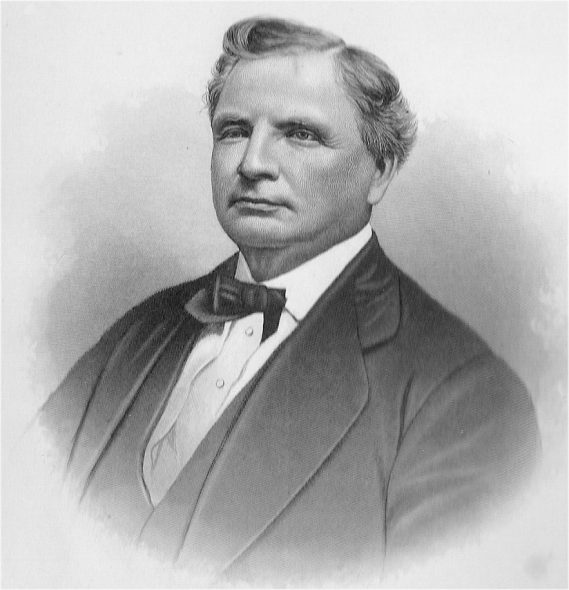
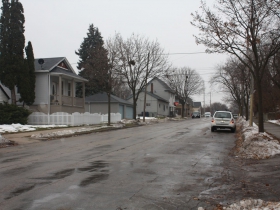
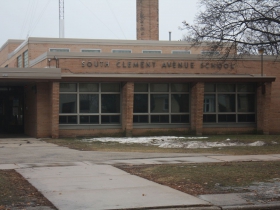
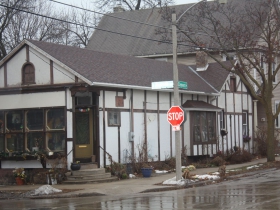
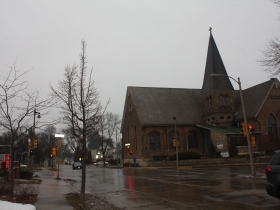
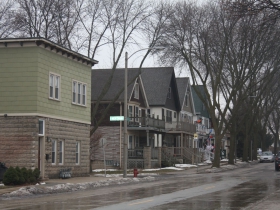
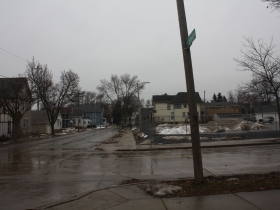
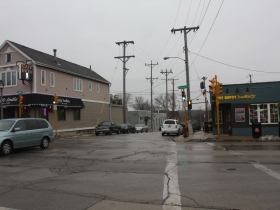
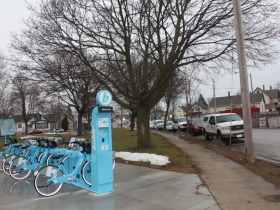

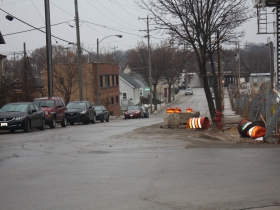


















What are the current names of the great lakes and river streets?
Casey – St. Lawrence is now Russell, Niagara is Potter, Huron is Delaware, Erie is S. Shore, and Michigan is Wentworth.
I’ve been told that the large park behind Clement Avenue School was a beer garden and/or amusement park in the early 20th century. I can’t find any info. Any ideas?
Tomroh,
That is Tippecanoe Park. You might try the book, Milwaukee County Parks by Laurie Muench Albano. Arcadia Publishing, c2007. It is available in public libraries in Milwaukee County.
As I recall area behind the school was field where we played as children on East Warnimont street names for prominent Warnimont family who owned all the land in area..Then eventually land graded and present park created; then of course school built in i think 50s..We lived on Clement but never knew origin of street name; this was great..
Carl – Can you describe how wealthy Mr. Ward might have been when he passed away ? When stated “he was the richest man in the Midwest”, that would be pretty big shoes to fill. I can think of 4 people offhand in Milwaukee in 1875 who may challenge that title. They would be : Alexander Mitchell, Daniel Wells, John Plankinton or Frederick Layton. Oh, & what about James J. Hill of St. Paul ? These people were all very wealthy. This would’ve been even before the Beer Barons became extremely rich too. I wouldn’t even consider them yet in 1875. It would be interesting to but a number or “est’d value” on all of these people’s holdings.